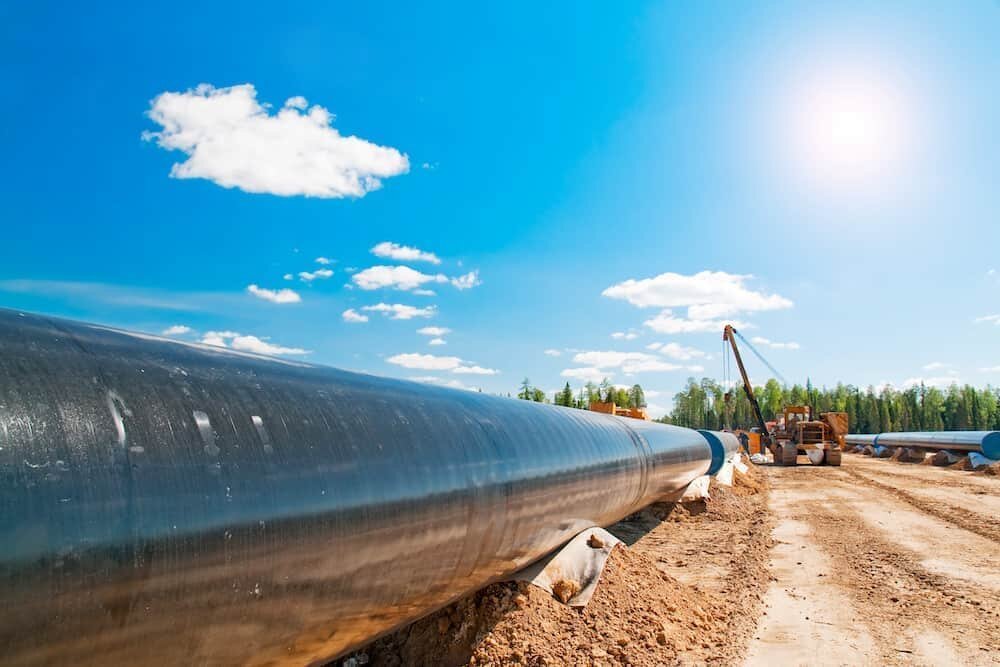
Caliper Tool & Caliper Pigging
After constructing a new pipeline system, there are various steps you must follow to ensure it operates smoothly. One step involves the pipeline pre-commissioning process.
The pipeline pre-commissioning process is necessary to ensure that your pipeline can safely transport products when in operation. This process examines several factors of your pipeline, including integrity and cleanliness.
When inspecting the integrity of your pipeline, American Pipeline Solutions uses a unique process—caliper pigging. This process is integral in determining the overall integrity of your pipeline system.
Keep reading to learn about American Pipeline Solutions’ caliper pigging process, when APS uses our caliper tool, and more.
American Pipeline Solutions’ Caliper Pigging Process
Caliper pigging is part of one of American Pipeline Solutions' pipeline pre-commissioning process.
Before a caliper tool can be used, the pipeline must be cleaned of any debris. American Pipeline Solutions clears a pipeline of debris by pigging the pipeline.
Once the pipeline has been cleared of debris, it is ready for the caliper pigging process. The caliper pigging process uses a special type of pigging equipment, known as a caliper tool or caliper pig. What makes the caliper tool unique is its design.
The body of a caliper tool is designed with mechanical sensors or arms. These mechanical fingers or arms are crucial to the data gathering process while the pig is in the pipeline. As the caliper tool runs through the pipeline, these sensors record the pipeline’s internal structure.
After the caliper pigging process is complete, American Pipeline Solutions confirms that the data was gathered correctly. This step is necessary for determining whether or not the caliper pig must run through the pipeline a second time.
Once the data is confirmed, the pipeline is ready for various pipeline tests, such as pipeline integrity testing.
What Data is Gathered With Caliper Pigging?
American Pipeline Solutions uses a caliper tool to measure the internal structure of your pipeline. Specifically, APS will use a caliper tool to record your pipeline’s internal diameter, wall thickness, pipe fitting, and any anomalies in the pipe.
Gathering this data allows APS to detect any issues in your pipeline before it is put into commission.
One example of how APS uses this data can be seen when recording the pipeline’s internal diameter. Once the pipeline’s internal diameter is recorded, APS will compare this data to the piping and instrumentation diagram. As a result, APS can confirm that your pipeline’s measurements align with what is specified in its piping and instrumentation diagram.
When Does American Pipeline Solutions Use Caliper Pigging?
American Pipeline Solutions utilizes its caliper pigging tool during the pipeline pre-commissioning process. This process is typically used when a utility provider has constructed a new pipeline. The pipeline pre-commissioning process is required when a utility provider takes over ownership of the pipeline from a contractor.
American Pipeline Solutions can provide pipeline pre-commissioning and caliper pigging services to numerous types of pipeline systems, including:
Newly built or constructed pipelines
New water and wastewater pipeline systems
New natural and other types of gas pipeline systems
Newly constructed and installed pipelines on academic campuses
This is by no means an exhaustive list of the types of pipelines that can utilize APS’ caliper pigging services. Customers are encouraged to contact the APS team to determine the best process for their newly constructed pipeline.
Are you looking for pipeline pre-commissioning and caliper pigging services?
Contact American Pipeline Solutions to learn more about our effective caliper pigging and pipeline pre-commissioning services today.






